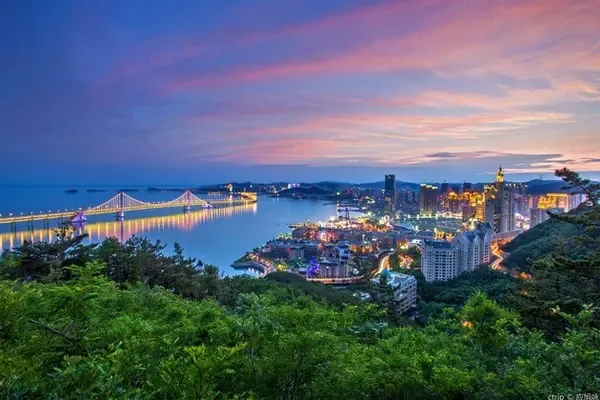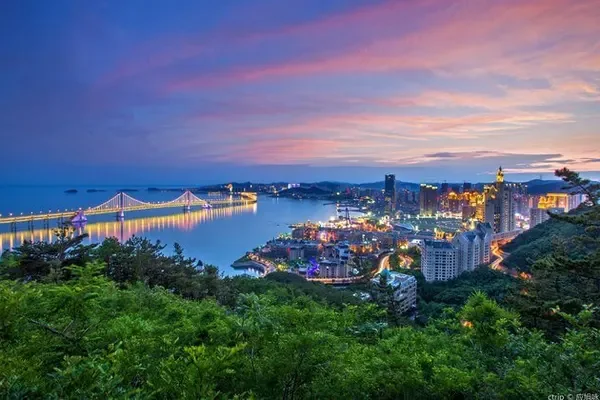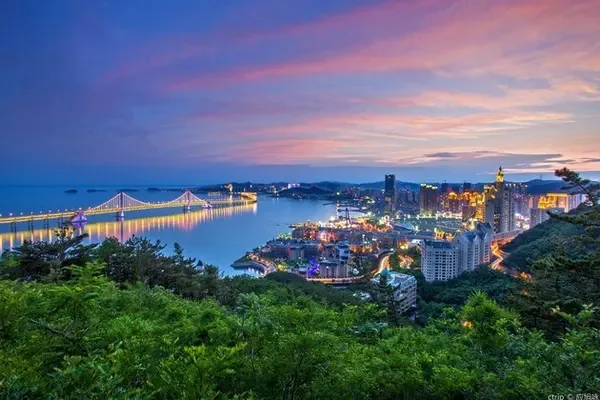vast desert,
Covering the earth alone.
the wind blows,
shaped the dunes,
Decorated with the texture of the earth.
camel bells,
Floating towards the direction of the setting sun,
Leading the footsteps of travelers to explore,
Towards the lingering Western Regions.
over the mountains,
across the desert,
The secret realm that I have been thinking about but never seen,
What is it like?

Kashgar, the westernmost part of the motherland. It is the end point of the ancient Silk Road in China and the starting point leading to the west. Starting from the Pamirs, the sacred Kunlun Mountains stretch from west to east, guarding Kashgar and the land of the motherland. Karakul Lake is like a bright mirror, reflecting the snow-covered Muztag Peak that never melts all year round. The tranquility and harmony between heaven and earth is so beautiful and atmospheric. Going along National Highway 314, the colors of the mountains change, from the green mountains, to the red mountains in Oytak, to the Baisha Mountains, and those mountains are interspersed with mountains of various colors. A natural museum.

Kashgar, with a history of more than 2,000 years of written records, has preserved the human history of Xinjiang well. I walked into the leisurely life of the Uighurs in the ancient city of Kashgar, and I ran into a Tajik wedding on the ancient Panlong Road with hundreds of bends in Ta County. Those cheerful dances, enthusiastic dialogues, and simple eyes all interpret that this is the most authentic and beautiful Xinjiang.

From Shanghai to Kashgar, it flew over more than 4,000 kilometers, crossed the Loess Plateau, and crossed the Gobi Desert. When you see this city full of different styles, all the fatigue of the journey is worth it.
Taste Kashgar snacks and walk into Kashgar life
When you first come to a city, you can’t wait to get into the life of the locals. For Kashgar, the most worthwhile place to visit is the ancient city of Kashgar. This is a free and open 5A-level scenic spot. People in the old city are living normally without being disturbed by tourists.

Coming to the ancient city of Kashgar means stepping into the most authentic life with the local customs of Xinjiang. The whole city retains its original style, and the brick-and-earth structure houses present a unique combination of pink and yellow colors of the local style. The outskirts of the ancient city are full of shops. People play hot wap and dombra, and sell jade, copper, woolen blankets, and dried fruits... You can go to Guli’s home to drink milk tea, or you can go to the Kashgar family in the Luomadian. Put on the Uyghur hat and play the dombra. In short, you will easily be moved by the folk customs here.




There are many snacks in the ancient city. The uncle who baked the buns just took out a large plate full of buns from the furnace wall, and sold them out in less than five minutes. The uncle who made the pilaf was very busy cooking the rice while cooking the meat. The uncle who bakes eggs insists on his unhurried rhythm. Eggs, duck eggs, goose eggs, quail eggs...even ostrich eggs, all kinds of eggs can be baked, and there are also nutritious eggs mixed with various eggs, mixed with ginseng, safflower , Honey... It is indeed a very different characteristic flavor.




The ancient city at night turns into a lively night market. During the day, there is still a sense of literature and art everywhere, but at night, it is full of fireworks, kebabs, noodles, belly meat, jelly... There are all kinds of snacks in Xinjiang, and locals often eat them at the night market until one or two o'clock at night. This is life. daily.




There are many alleys in the ancient city, and when you walk in, you will find people in Kashgar. Children play in groups, like to play those simple games, use stones to draw on the ground, play with rope, step on the cannon, and use the slope next to the stairs as a slide... They are not so obsessed with playing with adults' mobile phones , but like this simple pleasure. I seem to see my childhood in them, the youthful innocence that is gone forever in most cities. I can't help but feel that watching the children laughing and playing and walking around the ancient city is the best scenery.


Outside the ancient city is the Id Kah Mosque, and the camels in the square are walking slowly and leisurely, which is the rhythm of the city.


The Grand Bazaar of Central and Western Asia, the color of the Western Regions
Central and Western Asia Grand Bazaar, also known as Kashgar Grand Bazaar and Central and Western Asia International Trade Market, is one of the key commercial markets in Kashgar. A wide variety of products, with a strong western style. Clothes, cloth, musical instruments, wool blankets...everything is exquisite.



This is also a good place to learn about dried fruits in Xinjiang. There are many shops selling dried fruits. Common types such as raisins and candied dates are naturally indispensable, as well as desert fruit, badam, banbianmei and so on. There are dried figs and fresh peeled figs. They are placed on the leaves and eaten while walking. They are especially cool and sweet.





Xinjiang folk meals, unrestrained and refined
I asked the people in Kashgar, how is the food in Kashgar different from other places in Xinjiang? Kashgar people will proudly say that Kashgar has more authentic Xinjiang folk meals, that is, ethnic dishes. Kashgar folk cuisine has largely retained the essence of Xinjiang's traditional flavors, and at the same time, the dishes are not conservative, and they will also take into account the eating habits of modern people for improvement. The Xinjiang cuisine in my impression is only the unrestrained feeling of eating beef and mutton, but when I come to Kashgar and eat the folk meals here, I can deeply understand the unrestrainedness. In fact, every dish has its delicacy.

When I came to the Yangcun restaurant near the ancient city, accompanied by cheerful Xinjiang music, the Uyghur girl came out with brisk dance steps, and the aisle between the seats in the restaurant was her stage. The guests can't help but join her dancing, and the atmosphere is very warm. Mutton Haggis Soup is similar to the local snack, Mutton Meat. The common enamel tea mugs in the 1980s and 1990s were food utensils for meat, and the mug soup used a teapot-style mug. Open the lid and eat it like a pot of meat. It has a bold and unrestrained local style, and pouring soup from the spout looks very refined and elegant.

Xinjiang Qitai's snow lotus pepper is very distinctive. It looks very spicy, but it is not spicy when eaten, but the taste turns sweet. The noodles are cold, and the fried meat with snow lotus pepper is poured on it, and the overall feeling is not hot. Especially in summer, many people like to let it cool before eating.

The Qingshui beef is made of local cattle in Kashgar, which is tough and full of aroma. During the cooking process, local Xinjiang spices are added to remove the fishy smell. Thinly sliced beef, mixed with minced garlic and shallots, is very simple and homely, but it tastes delicious. Qitai’s potato flour is boiled into jelly. Compared with cold noodle and jelly in other provinces, it has stronger toughness, and it usually does not break when picked up with chopsticks. Hand-caught mutton is the signature feature here. The black-headed sheep produced in the Bayinbulak prairie is called "the imperial concubine among the sheep" by the locals, and the meat is tender. After simple cooking, dipped in toppings, enough aftertaste.


From Red Mountain to Baisha Mountain, the changing colors of the earth
The beauty of Kashgar lies in humanities, and outside of Kashgar, there are even more beautiful scenery. Just the words "Pamirs" are enough to make people fascinated. The Pamir Plateau straddles Tajikistan, China and Afghanistan, and the east is in the Kizilsu Kirgiz Autonomous Prefecture and the Kashgar region in China. It is bounded by the Muji Valley and the Taxkorgan Valley in the east, adjacent to the West Kunlun Mountains, and the Karakorum Mountains in the south. The main peaks are all above 6,000 meters above sea level.

Starting from Kashgar City, on the way to the Pamirs, we first passed the Oytak Red Mountain, which is called the "Southern Xinjiang Flame Mountain". Carved land art.

Walking along National Highway 314, the scenery along the way is beautiful and the vision is vast. This national road connects Urumqi and Khunqirab, also known as the "Ukrainian Red Line", with a total length of 1948 kilometers. It is this road that gives the beauty of nature isolated from the world a chance to be presented to the world and live up to the footsteps of travelers. However, mudslides will occur frequently on this road, and rain or snowmelt in the mountains will bring the danger of landslides.


If the road is clear, you can reach Baisha Mountain and Baisha Lake more than three hours after starting from Kashgar. The stretching mountains are white, reflecting the light blue Baisha Lake, gentle and broad. You can walk by the lake, step on the water gently, feel the lightness of the water, look at the distant mountains, and experience the vastness of the mountains.


Muztagh Peak, Karakul Lake
On the way from Kashgar to Ta County, the most beautiful scenery is Karakul Lake and Muztag Peak. Walking to Karakule Lake, the altitude reaches about 3,700 meters, and the lake is clear and blue in the sun, so moving. Karakul Lake is at the foot of Muztagh Peak. The lake water reflects Muztagh Peak and the blue sky and white clouds. The harmony and tranquility of nature is such a beautiful picture.

Muztagh Peak is over 7,500 meters above sea level. Together with Gongger Peak and Gongger Jiubie Peak, it is known as the three peaks of the East Pamir Plateau and is known as the "father of glaciers". The top of Muztagh Peak is covered with snow all the year round. On a fine day, the sun shines on the snow-capped mountain top, which is spectacular, beautiful and moving.

On the way to Ta County, a long section is equivalent to walking around Muztagh Peak to appreciate the beauty of this snow-capped mountain from different angles. On a winding mountain road, as the altitude rises, the perspective of admiring Muztagh Peak is completely different from that of Karakul Lake. The towering peaks in the clouds, the vast and magnificent land, I feel so small at this moment, and so lucky to be able to feel freedom among the beauty of the world.



Panlong ancient road, through all the detours of life
The most beautiful scenery in Xinjiang is on the road. The road itself is the scenery and the moving melody during the journey. The Panlong Ancient Road in Waqia Township, Taxian County is like a giant dragon, winding and circling among the mountains. The 30-kilometer mountain road is full of bends, which is a great test for the driver's skills and experience.


Walking to the top of the mountain, the altitude reaches 4216 meters. Going down from the other side of the mountain, it is also a Panlong. After driving, you will have a different experience physically and mentally, and you will be even more moved by the words on the signs at the beginning and end of this road: I have gone through all the detours in life today, and my life has been smooth since then.

Panlong Ancient Road is not only a yearning for outsiders, but also attractive enough for locals. On the Panlong Ancient Road, I ran into a Tajik wedding. They sang and danced, full of joy. Presumably letting the happy car drive through the Panlong Ancient Road is also praying that the couple's married life will go through all the detours quickly, and it will be smooth from now on.



The simple folk customs make the cultural scenery always moving, and the natural beauty of the four seasons is constantly changing. People say that the four seasons in Xinjiang have their own beauty. When autumn comes, the Populus euphratica forest will turn golden, which is another beautiful and moving scene. Put your bags on your back, the journey is at your feet, maybe one day, we can meet in the beautiful Xinjiang, enjoy the magnificence of the mountains and rivers of the motherland together, and talk about the poems and distant places we have seen or are chasing each other.

hotel
When choosing a hotel in Kashgar, the focus is on overall service and convenient transportation. There are very limited five-star hotels in Kashgar, and there are many mid-end business express hotels. GreenTree Inn Banchao Road Branch is a good choice. It is only 15 minutes' drive from the railway station and it is also very close to the ancient city of Kashgar.


The hotel has a variety of room types such as business rooms, round bed rooms, and boat bed rooms. The Kunlun Mountains are rolling and rolling, reflecting the blue sky. The most distinctive room type is the boat bed room. The bed is designed in the shape of a boat, and sleeping on the "boat" will give you the feeling of going to the stars and the sea.



